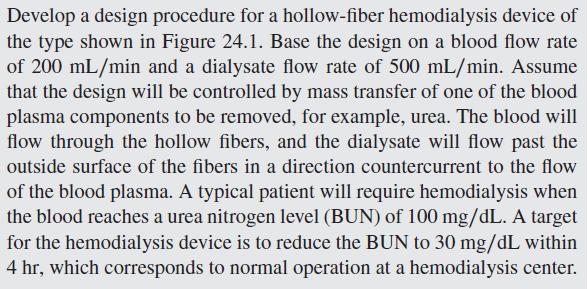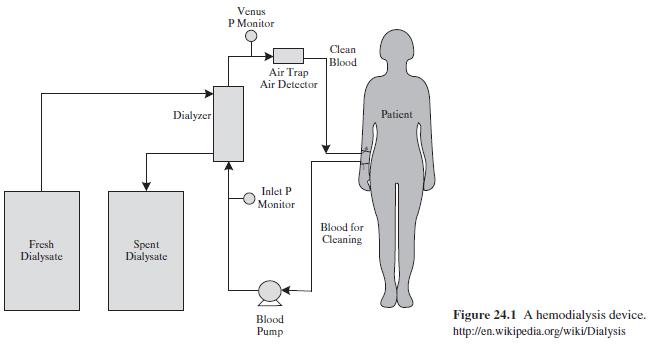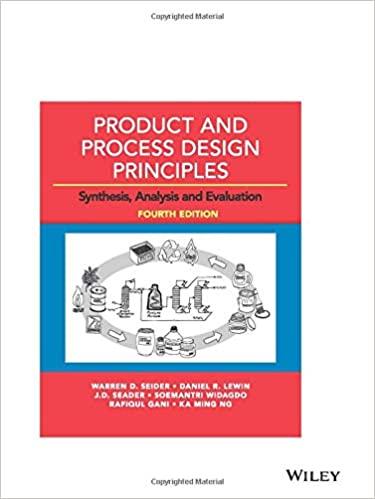Consider the hemodialysis device using the hollow-fiber module in Figure 24.1, operating (12 mathrm{hr} / mathrm{wk}) (3
Question:
Consider the hemodialysis device using the hollow-fiber module in Figure 24.1, operating \(12 \mathrm{hr} / \mathrm{wk}\) (3 days, \(4 \mathrm{hr} /\) day) at a dialysis center. As shown in Example 24.1, with a blood flow rate of \(200 \mathrm{~mL} / \mathrm{min}\) and a dialysate flow rate of \(500 \mathrm{~mL} / \mathrm{min}\), its overall mass-transfer coefficient is estimated to be \(K_{i}=0.000468 \mathrm{~cm} / \mathrm{s}\).
(a) To design a home hemodialysis device, assume operation \(42 \mathrm{hr} / \mathrm{wk}(7\) days, \(6 \mathrm{hr} /\) day) while the patient sleeps. Reduce the blood flow rate by one-third (to \(133 \mathrm{~mL} / \mathrm{min}\) ) and the dialysate flow rate to \((300 \mathrm{~mL} / \mathrm{min})\) - a big advantage when sleeping. As a first step in redesigning the module, assume no changes in its geometry and estimate the mass-transfer coefficient inside the fiber, \(k_{b}\) (where the blood flows). Use the correlation:
\[N_{\mathrm{Sh}}=3.254\left[\frac{L / D_{i}}{N_{\mathrm{Pe}_{\mathrm{M}}}}\right]^{-1 / 3}\]
where \(L\) is the hollow-fiber length, \(D_{i}\) is its inside radius, \(N_{\mathrm{Sh}}\) is the Sherwood Number, and \(N_{\mathrm{Pe}_{\mathrm{M}}}\) is the Peclet Number for mass transfer. Then, assuming no change in the mass-transfer coefficient on the outside of the fibers, \(k_{d}\) (where the dialysate flows), estimate the reduction in \(K_{i}\).
(b) Increase the membrane permeability by a factor of 10 . Estimate the increase in \(K_{i}\).
Data From Example 24.1:-

Figure 24.1:-

Step by Step Answer:

Product And Process Design Principles Synthesis Analysis And Evaluation
ISBN: 9781119355243
4th Edition
Authors: Warren D. Seider, Daniel R. Lewin, J. D. Seader, Soemantri Widagdo, Rafiqul Gani, Ka Ming Ng





